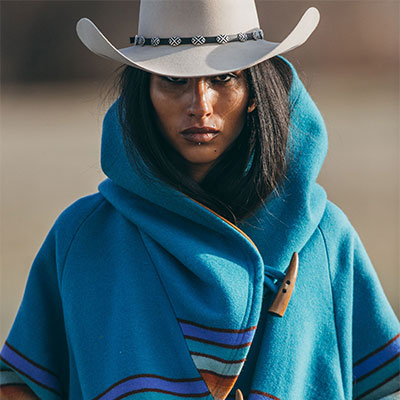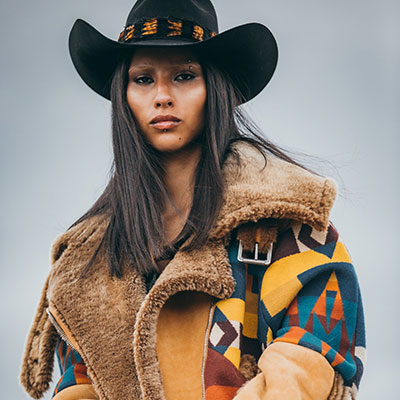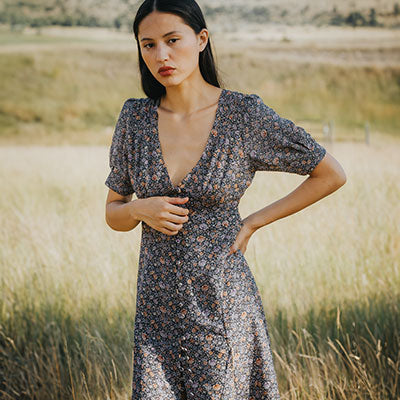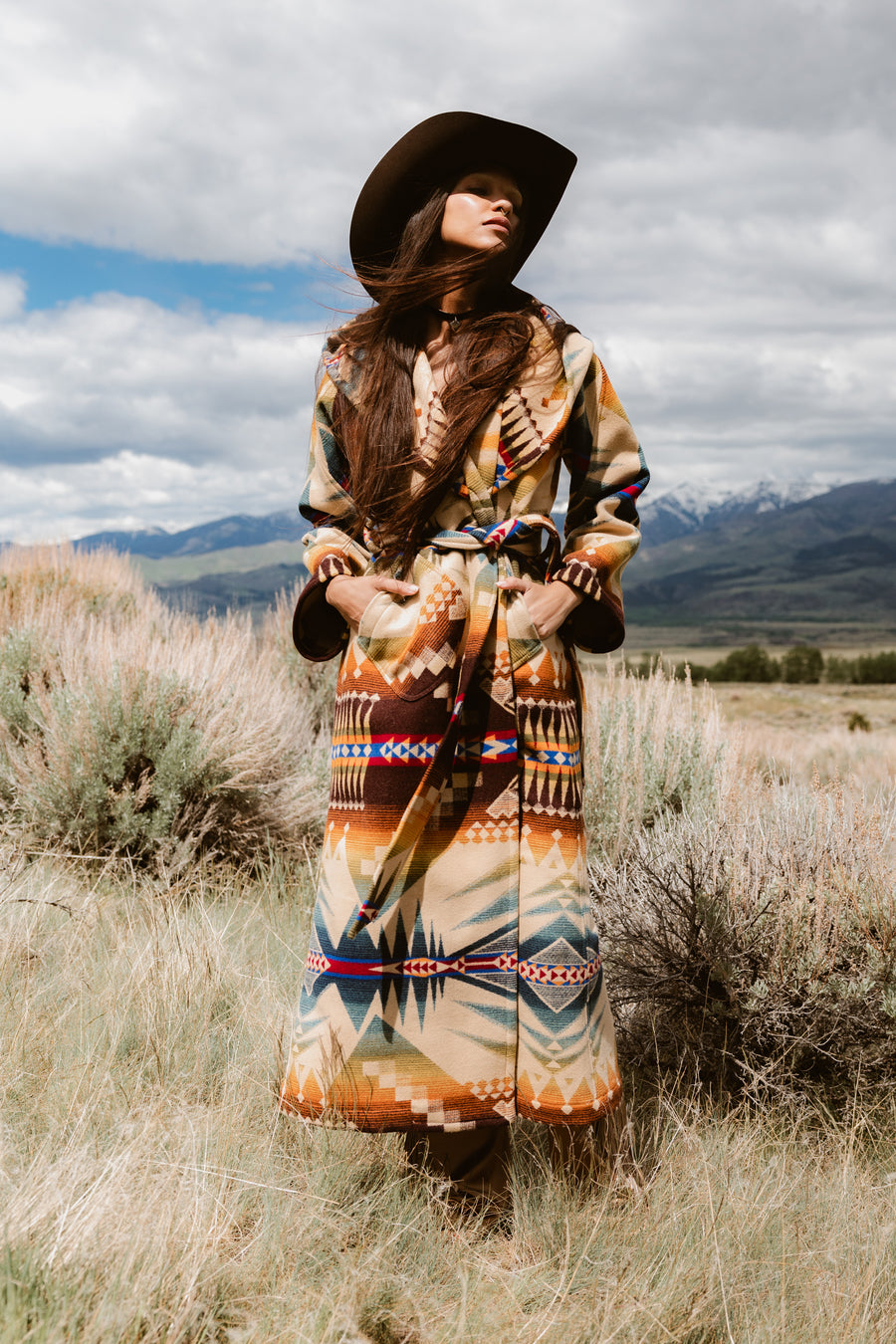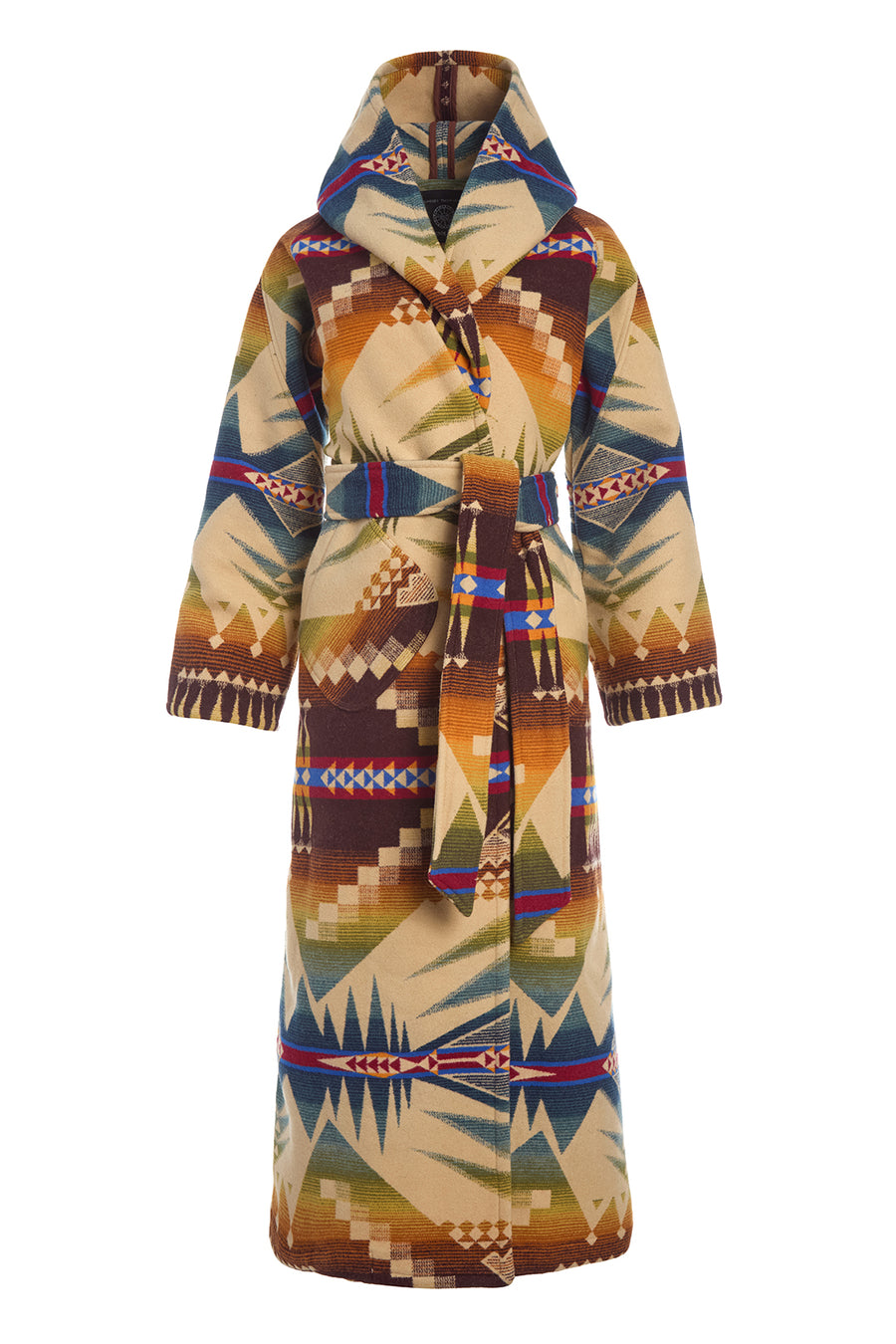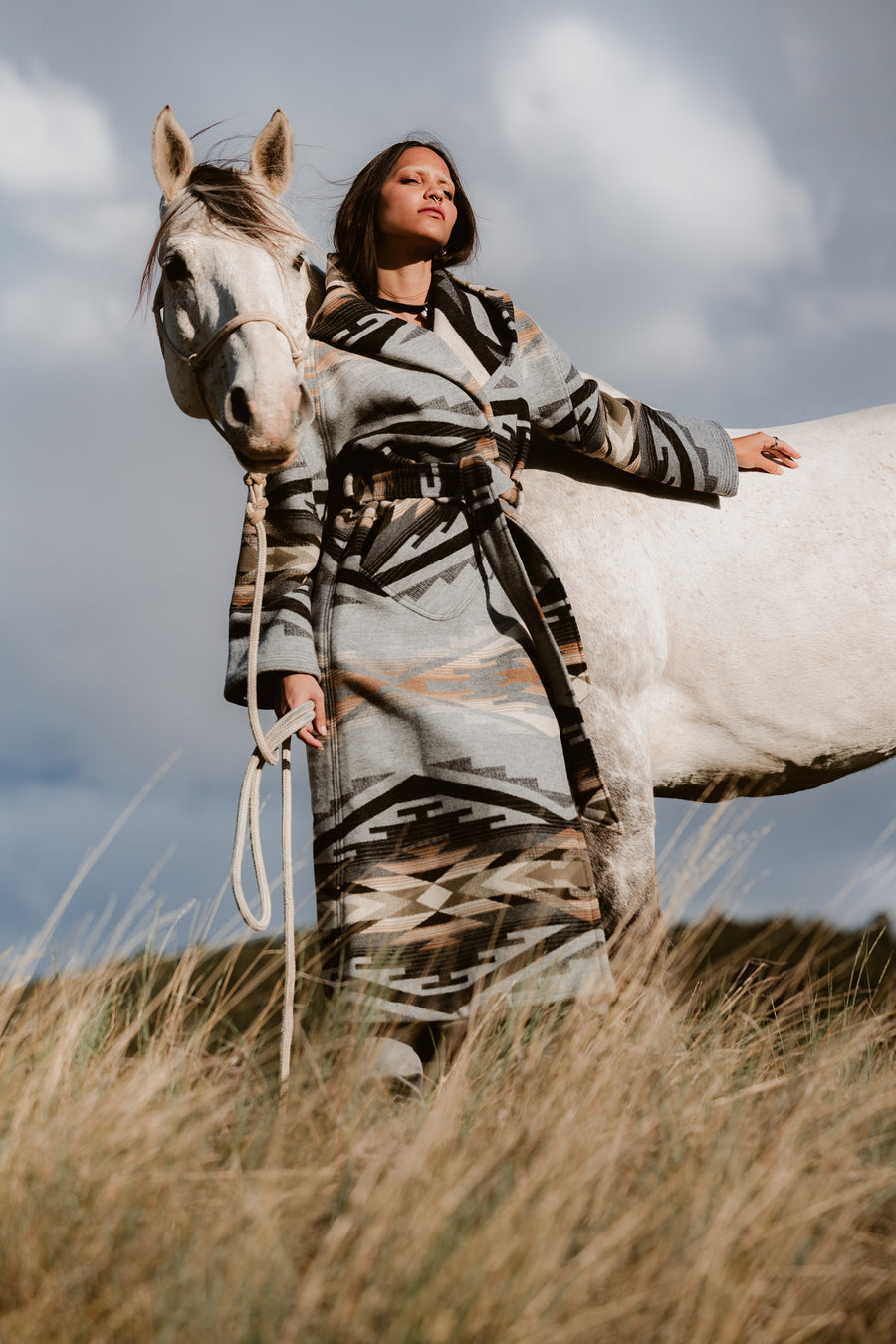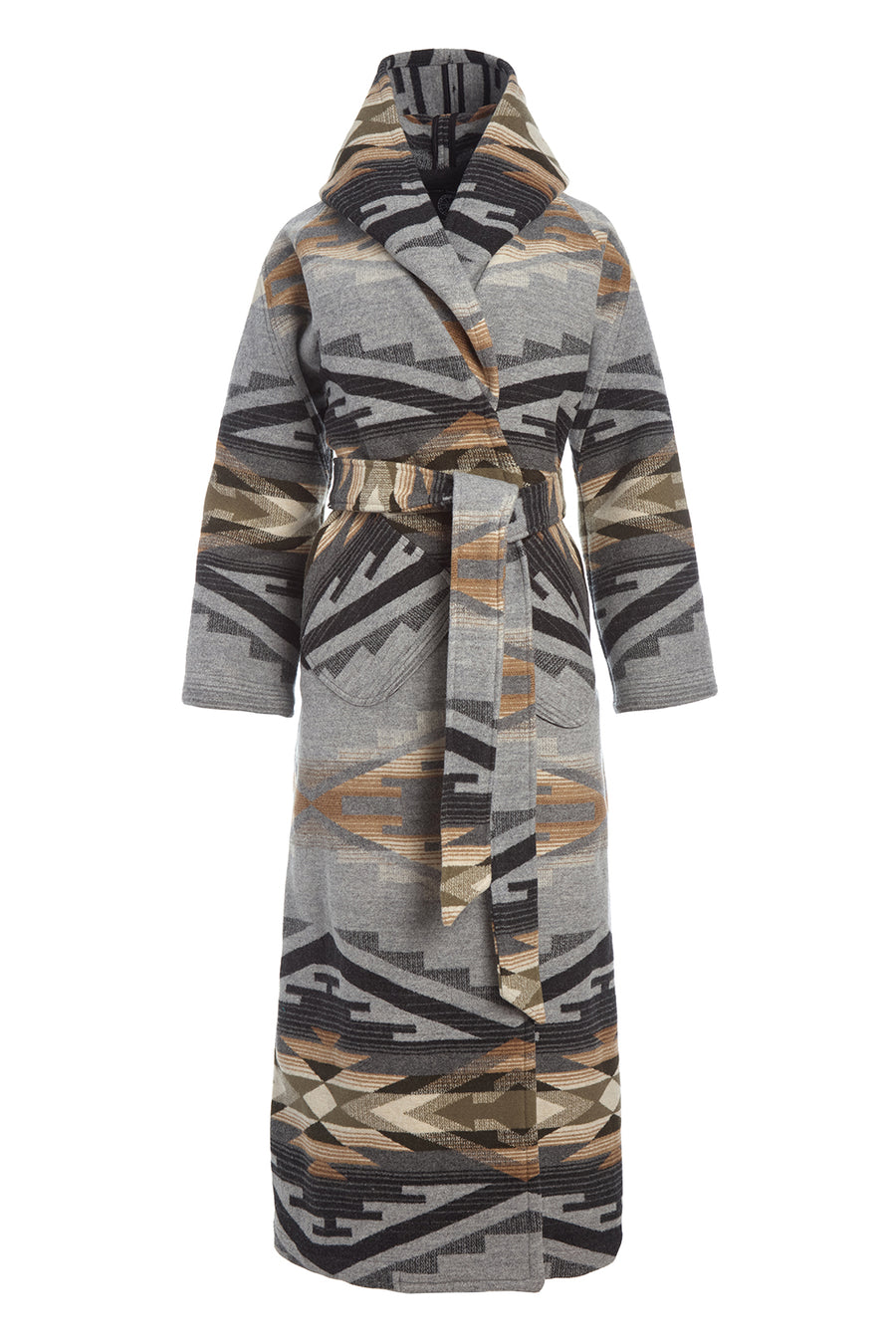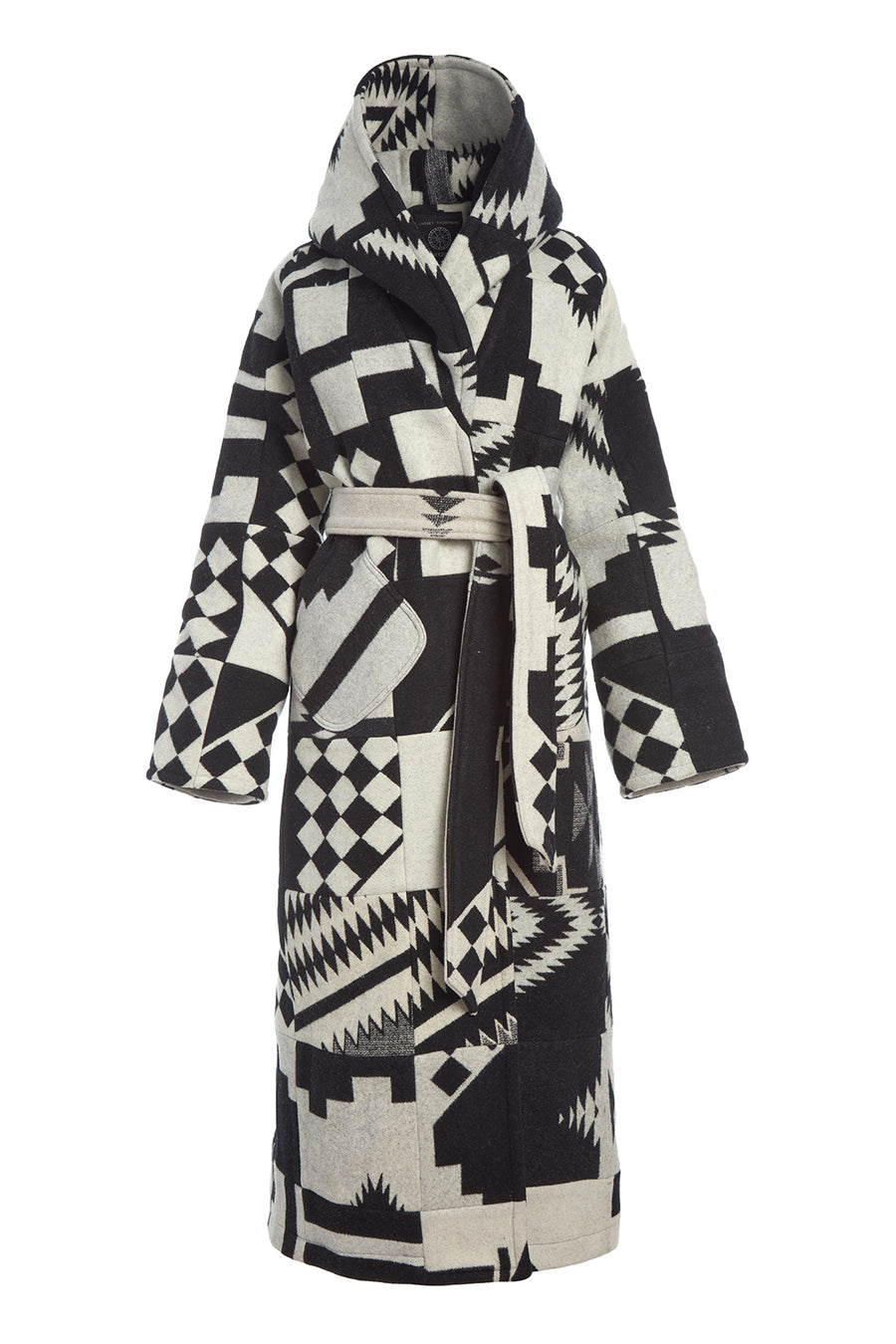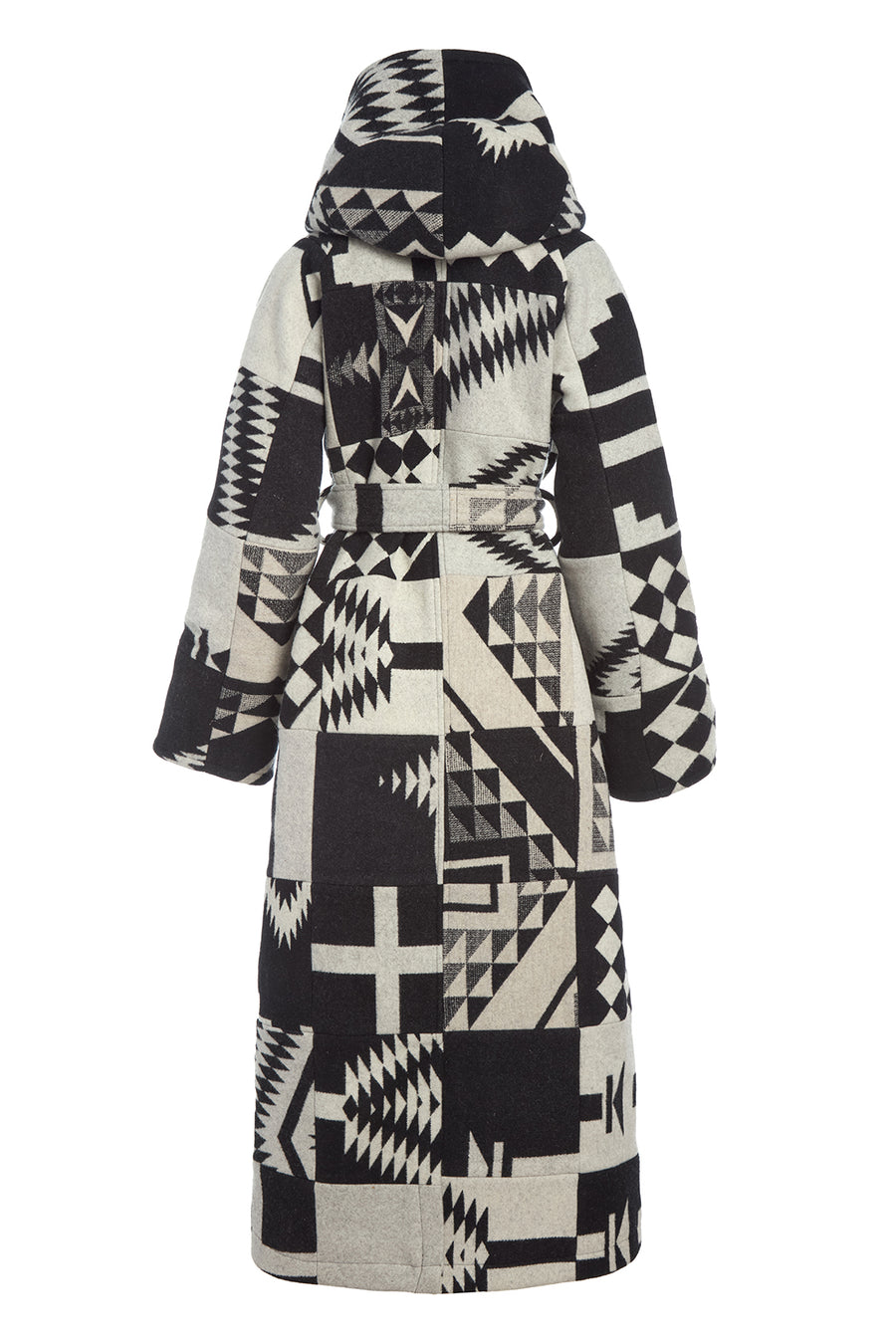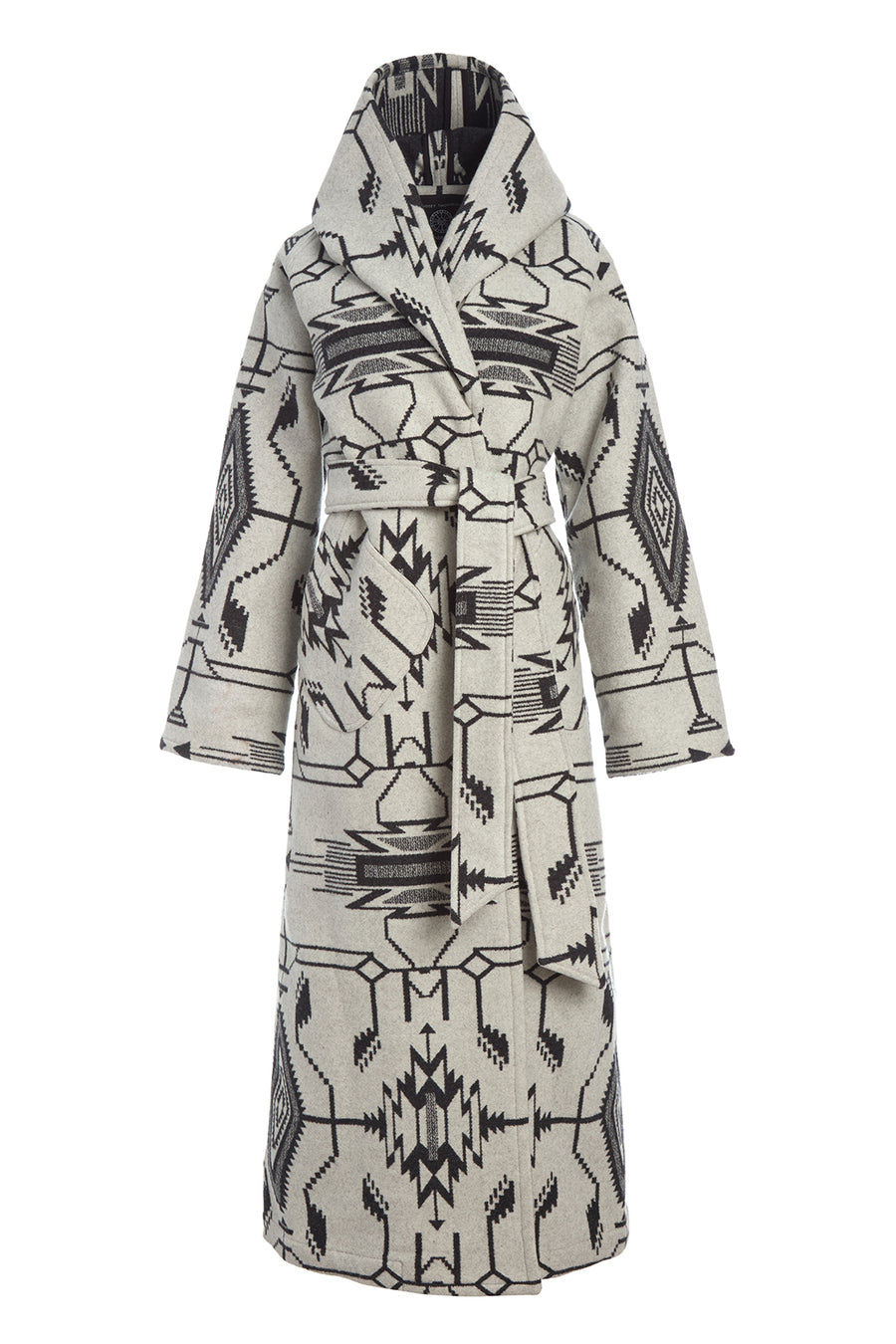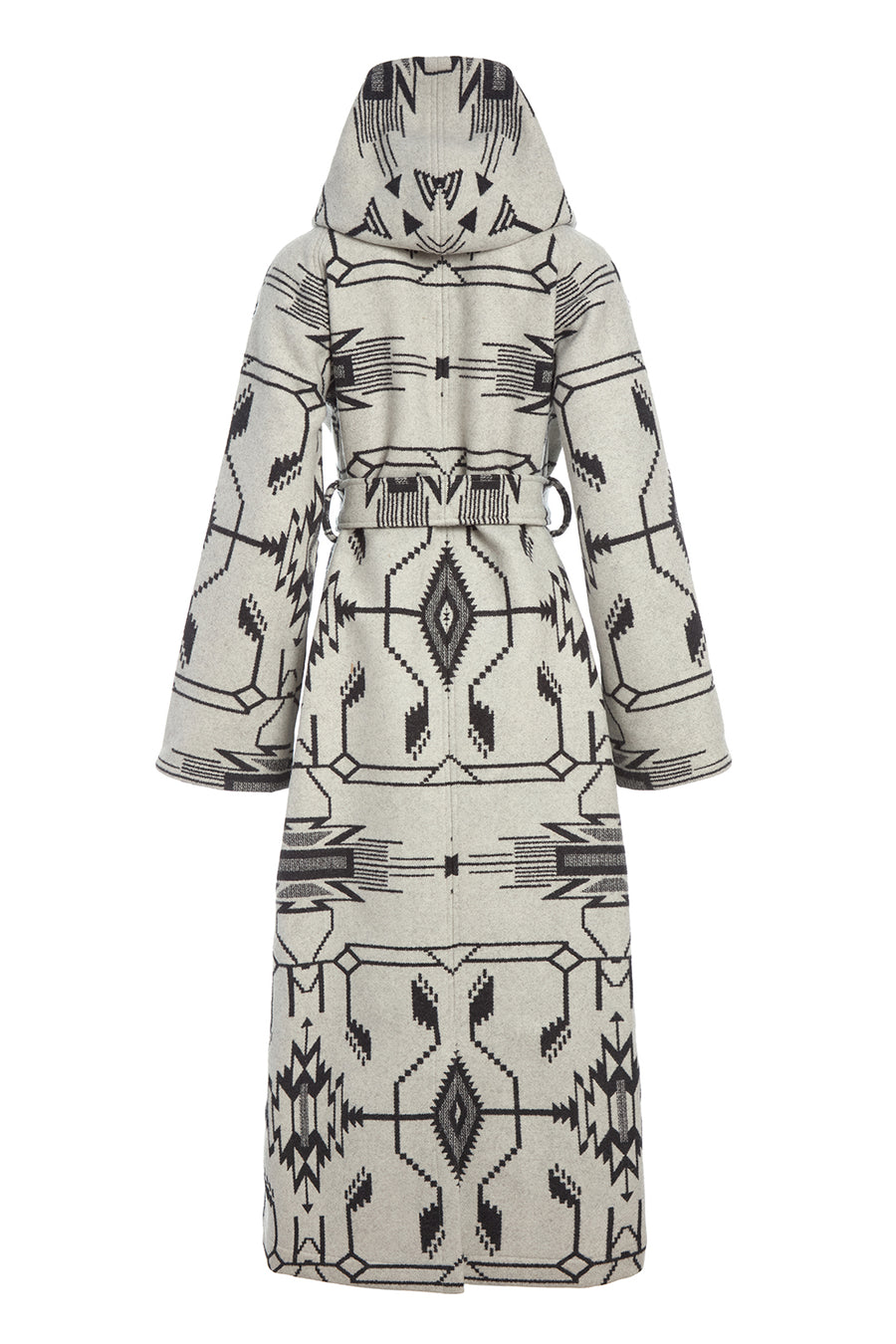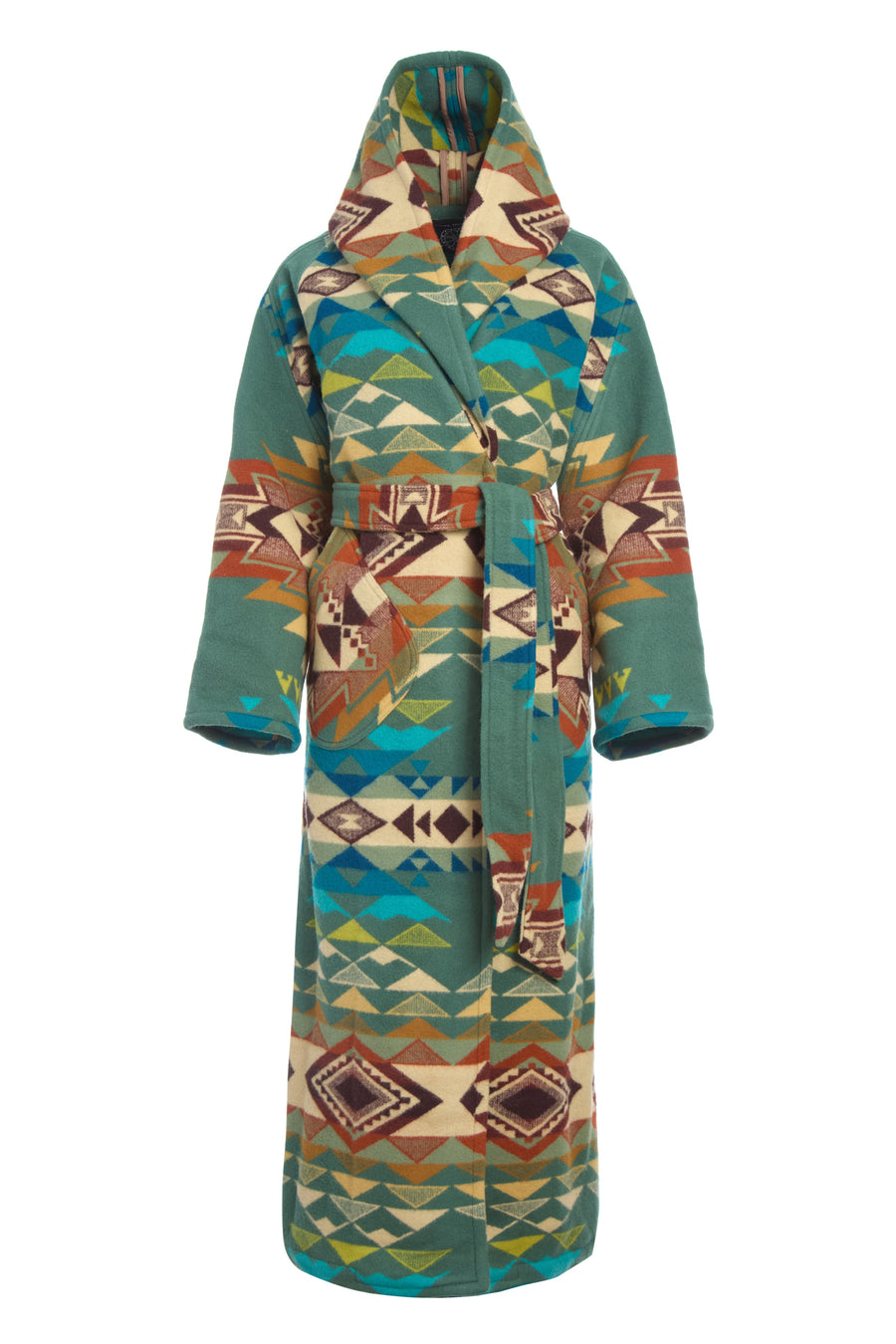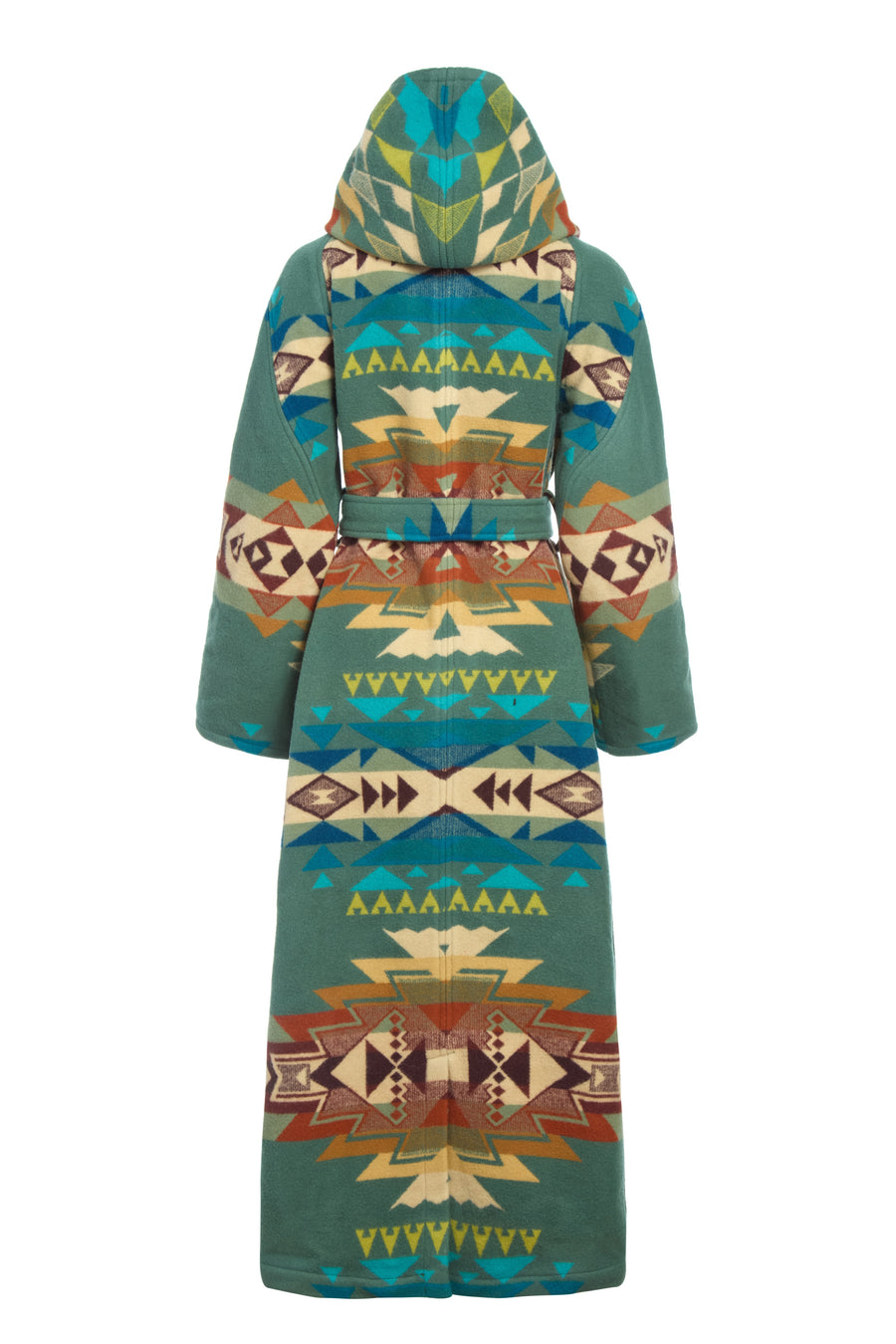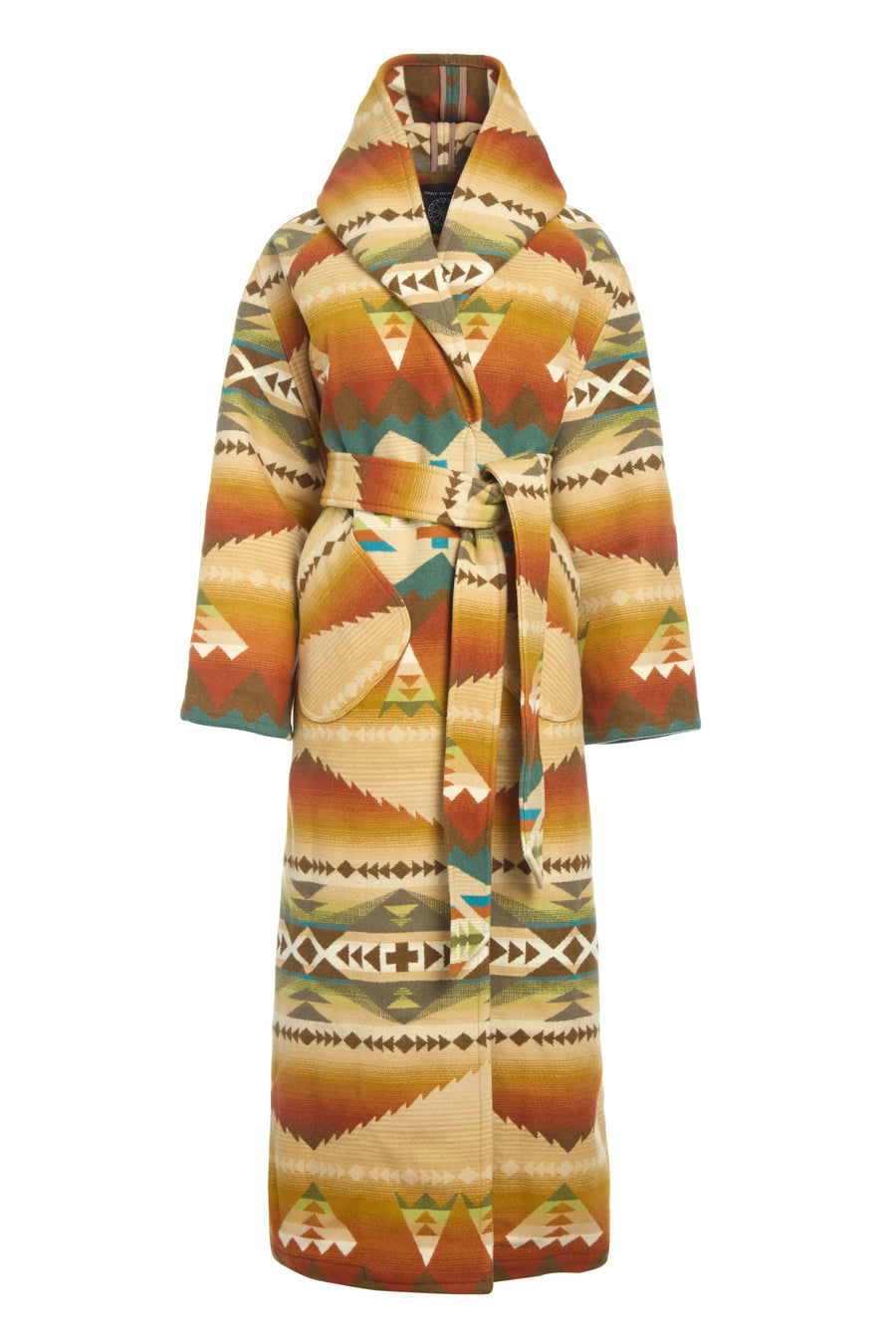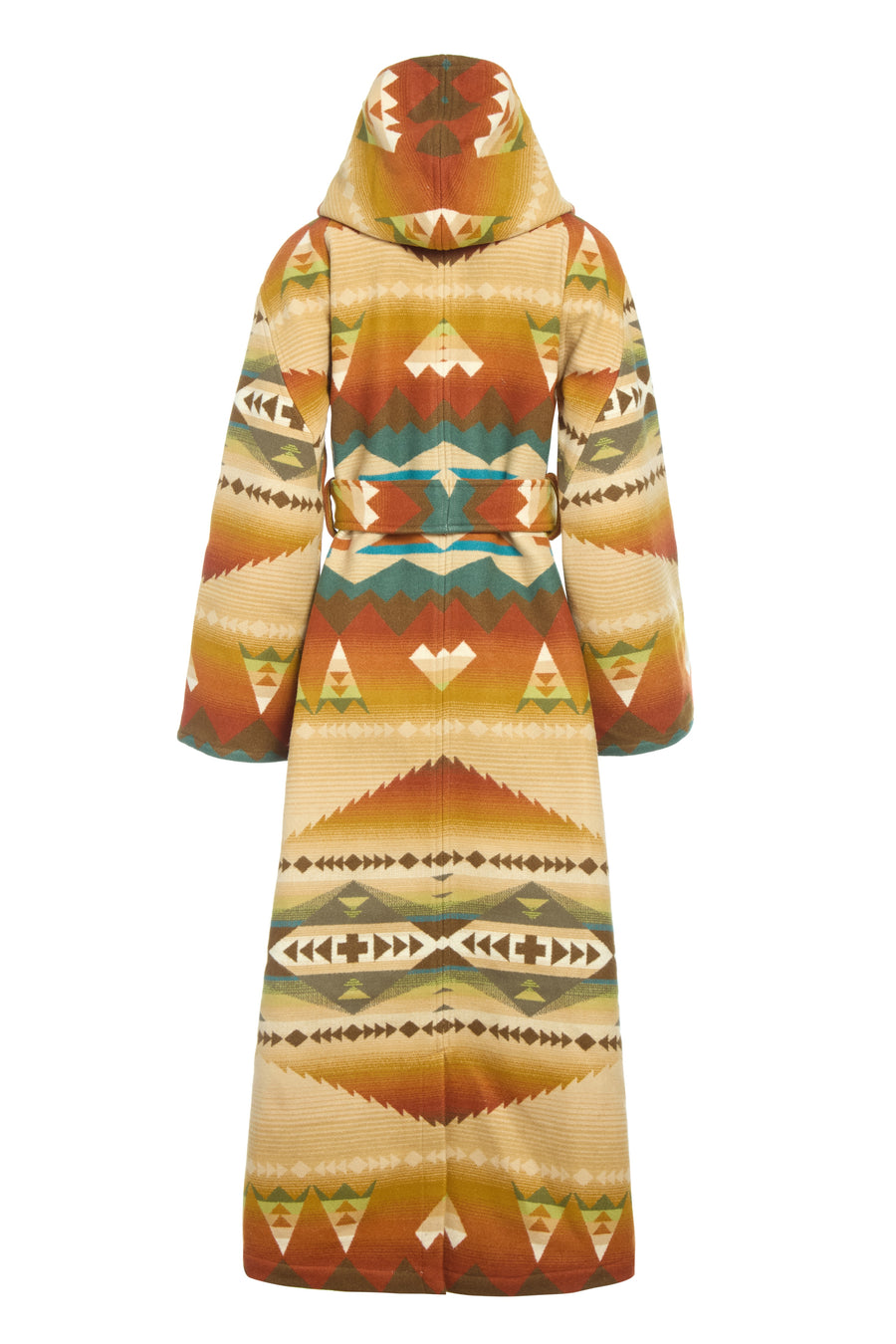LIMITED EDITION
Full length unlined Duster with waist tie belt with loops and lined patch pockets
Body of duster is made from Pendleton's Tamiami Trail Blanket. Napped Pendleton blankets: 82% Wool, 18% Cotton and Wool Cashmere facings
Tamiami Trail’s design is based on Seminole patchwork designs used in quilts and clothing. By the end of the Seminole Wars in 1858, the Seminole population of Florida was reduced from thousands to a few hundred. By the late 1800s, most had been driven out of Florida, but small bands remained in the Everglades and Big Cypress Swamp. Seminoles quietly retained their culture — farming, hunting alligators and visiting trading posts along the Miami River with pelts and egret plumes to trade for supplies. Their thatch-roofed homes were called chickees, and they traveled in dugout canoes made from cypress logs. It was a long canoe trip from the Everglades to trade for cotton cloth. Seminole women began sewing with whatever materials and scraps they could find, including survey pennants, fabric selvedges and end-bolts. The patterns themselves tell stories.

